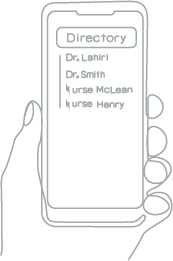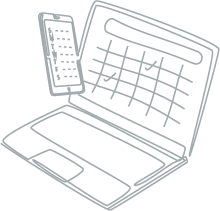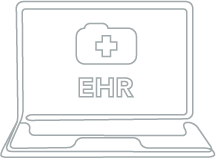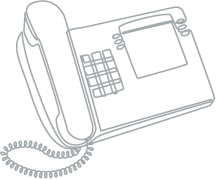Event
Why Integrations Matter for Clinical Communication
Watch NowTABLE OF CONTENTS
The transfer center is an invaluable part of a health system’s communication ecosystem, and in many cases, it’s an essential stop on a patient’s journey to receiving care. By design, the transfer center’s goal is to allow physicians to quickly initiate and complete intrafacility and interfacility patient transfers with limited hiccups and expedited communication workflows to smooth the process.
The transfer center of today has come a long way, but legacy on-prem solutions can still make speedy patient transfers difficult to accomplish. Cumbersome workflows, long wait times, inaccurate provider schedules, and overwhelmed operators all contribute to delays in the transfer process. By tapping years of communication and clinical workflow expertise, we’ve devised a guide for the operations leader of today that outlines the key components necessary for improving the hospital transfer center and highlights the functionality many current systems lack. Let’s take a look at how updated features and useful integrations can equip your organization with a modern, more efficient transfer center.
Though transfers are a common process in care delivery, disjointed workflows can cause frustration for the referring provider, operator, and receiving department or healthcare facility. These negative experiences can easily lead to missed transfer opportunities, and over time, the missed opportunities can contribute to revenue loss. Poor patient transfer operations—often inhibited by vaguely defined processes, dated technology with limited functionality, and limited visibility into provider schedules— can lead to a number of undesirable outcomes:
Outdated systems and cumbersome workflows waste valuable operator time and make patient transfers less efficient. With legacy systems, operators often have to use multiple programs to manage call queues, reference directories, and search for the correct provider. Care can then become delayed due to:
Message delivery needs to be reliable to facilitate a timely patient transfer. Legacy systems don’t give operators and care team members access to one common communication ecosystem that shows when a message has been successfully sent, delivered, and read. This can create delayed responses and general uncertainty about message delivery/reliability, and it makes it difficult to audit communication trails after the fact. Poor communication “hygiene” often leads to:
In recent years, and especially since the onset of the COVID pandemic, healthcare organizations have been faced with persistent staffing shortages, dwindling margins, and elevated patient expectations. It’s possible that some don’t view the transfer center as a prime candidate for process improvements that can lead to significant ROI, but in reality, there are a number of ways transfer operations can be improved to ease some of the challenges healthcare organizations are facing.
We’ve compiled eight unique capabilities that a modern transfer center operator console should have, along with the ways these features can impact your hospital’s day-to-day operations and bottom line. Use the checklist below to identify where your transfer center stands.


Improve workflows by:
Allow providers to:

Directory integration enables:

Integrating with a hospital’s scheduling software allows operators to:

Integrating the operator console and CRM system:

Integrating the operator console and CRM system:

Integrating with patient flow systems helps with:

This integration allows the operator console to dial any type of phone directly, including:

By integrating the operator console with pagers, agents can:
Improving Results with Easier Workflows
Sue has an appointment with her primary care provider, Dr. Smith. She presents with a cough, shortness of breath, and fatigue. Dr. Smith examines her and recommends that Sue’s daughter take her to the ED for breathing treatments, an X-ray, and additional testing.
Dr. Smith calls the hospital transfer center and is redirected to the ED with the shortest wait time. The operator identifies the appropriate ED for Sue and her daughter to visit. Dr. Smith can then search and securely message the “ED on-call” physician through the PerfectServe platform and let them know Sue is on her way.
How is this possible?
PerfectServe’s operator console enables this efficient communication workflow with:
Results:
The seamless process leads to a number of positive results:

Seamless Connections for a Direct Admission
Jack has been admitted to a rural hospital after falling at his home. Through X-rays and other testing, it’s determined that he needs to be transferred to another hospital where he can have orthopedic surgery to repair his hip. After the orders were placed and the transfer was initiated, Jack’s nurse at the rural hospital, Carla, needed to call a report to the nurse on the orthopedic floor at the new hospital.
Carla calls the transfer center at the receiving hospital, where the operator is able to connect her with the receiving unit’s charge nurse, Nichole. The details of the patient’s needs are captured in a form-based template. Nichole can then review the page, add the nurse who will be receiving the patient to the message, and text back to the operator that the receiving nurse will call the referrer back once they’re out of a patient’s room and available for report.
If the caller hangs up, PerfectServe’s park and page workflow uses the callback number to connect the receiving nurse directly to the caller when they dial into the extension.
How is this possible?
PerfectServe’s operator console makes this scenario possible with:
Results:
The seamless process leads to a number of positive results:

Collaboration Made Possible with an Advanced Operator Console
Roberta went for a stress test Tuesday morning, where it was decided she needed a heart cath STAT. Dr. Kim, Roberta’s cardiologist, performs the heart catheterization, but during the procedure, Roberta’s condition becomes critical.
Dr. Kim decides she needs a balloon pump and to be placed on a vent. Dr. Kim calls the hospital transfer center in hopes of connecting with the cardiothoracic (CT) surgeon on call to discuss Roberta’s admission, surgery, and condition. The operator is able to seamlessly connect Dr. Kim with the CT surgeon on call. The operator also patches in a third collaborator, the OR scheduler, to get Roberta on the schedule for a cardiac bypass.
After hanging up, the operator couldn’t remember some of the details from the discussion. To confirm his memory, he’s able to reference the notes he took and access a call recording to listen to the call. Roberta is quickly placed in a bed in the cardiac intensive care unit, where she receives care in a timely manner and is placed under observation as she awaits surgery.
How is this possible?
PerfectServe’s operator console makes this scenario possible with:
Results:
The seamless process leads to a number of positive results:

With a modern infrastructure and the right integrations, the operator console becomes a powerhouse for expediting patient transfers, funneling communication, and helping clinics deliver exceptional patient care. For the operations leader, knowing how to optimize transfer center workflows means:
 Empowering operators with user-friendly, efficient communication tools
Empowering operators with user-friendly, efficient communication tools
 Enhancing the provider experience when requesting referrals, placing calls, and communicating with receiving hospitals
Enhancing the provider experience when requesting referrals, placing calls, and communicating with receiving hospitals
 Improving speed to care for patients and their families
Improving speed to care for patients and their families